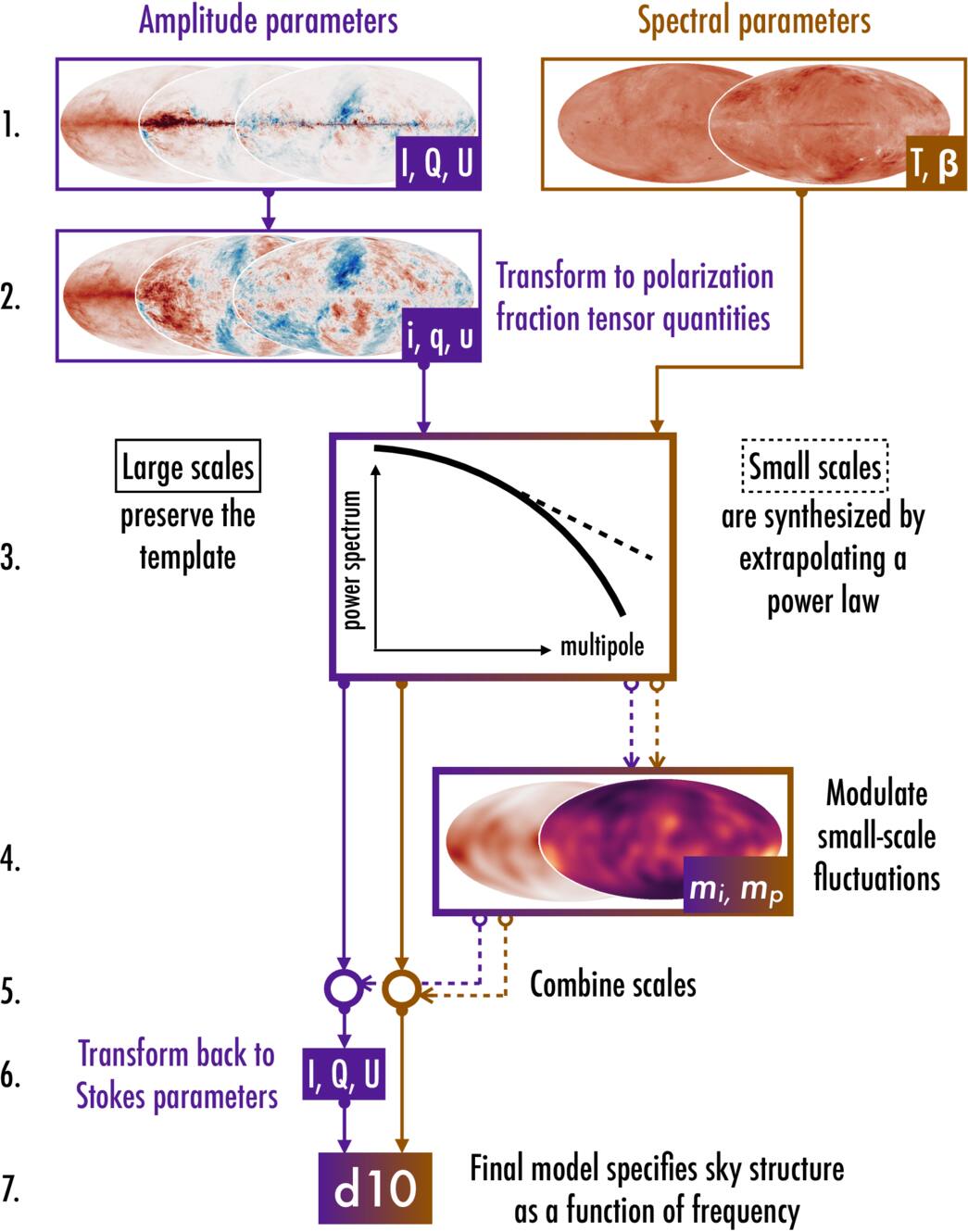PySM Methods Paper Published in ApJ

The Astrophysical Journal formally published our paper, Full-sky Models of Galactic Microwave Emission and Polarization at Sub-arcminute Scales for the Python Sky Model, on September 12, 2025. We are sharing this update now that the issue is out, and this work represents the efforts of the entire Pan Experiment Galactic Science Group.
You can still read the arXiv version on arXiv:2502.20452, and the latest software documentation lives at the PySM3 docs.
Recommended complexity bundles
The paper formalizes three recommended PySM foreground bundles that bracket different astrophysical assumptions:
- Low complexity:
d9,s4,f1,a1,co1– amplitude-only small-scale fluctuations with no dust or synchrotron frequency decorrelation and unpolarized CO. - Medium complexity:
d10,s5,f1,a1,co3– extends fluctuations to the spectral parameters and includes CO polarization at the 1% level. - High complexity:
d12,s7,f1,a2,co3– adopts the Martinez-Solaeche dust layer model with line-of-sight decorrelation, spatially varying synchrotron curvature, and polarized AME and CO.
Models characterized in the paper
Beyond the bundle definitions, the publication provides validation and performance metrics for the new component models now available in PySM 3:
- Dust:
d9,d10,d11, and the layer-basedd12implementation. - Synchrotron:
s5,s6, ands7, contrasted with the legacy templates. - Free-free and AME: continued reliance on
f1plus botha1(unpolarized) anda2(2% polarized) AME options. - CO lines: new
co1,co2, andco3scenarios spanning unpolarized to polarized implementations.
All of these models, and experiment-specific sky realizations derived from them, are available for download through the CMB-S4 Data Portal.
In addition, the paper’s LaTeX sources and the notebooks used for figures live in the galsci/pysm_methods_paper repository.